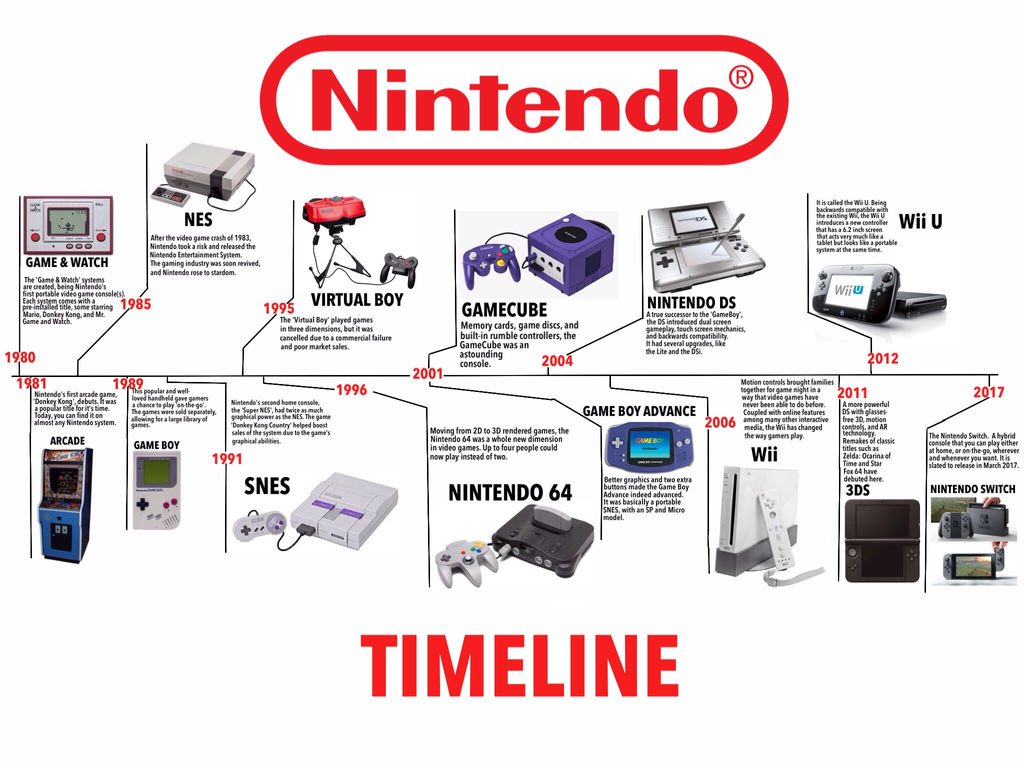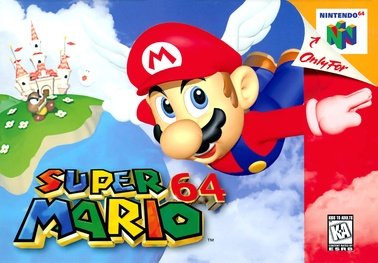This month we dive into the history of Nintendo and Super Mario, the loveable, super-smashing, tennis-playing, go-karting, partier. Jeff Ryan’s book explores the history of Nintendo and the evolution of the Video Game industry to the console competition we have today.
Tech Themes
Constraint Breeds Creativity. Sometimes, challenges drum up creativity like nothing other than having your back against the wall can. This was the case with Nintendo. In 1980, Nintendo’s CEO Hiroshi Yamauchi sent his son-in-law, Minoru Arakawa to Manhattan to launch Nintendo of America. The idea was to launch Nintendo into the large and growing market for arcade cabinet games in the US. Nintendo had developed a Space Invaders knock-off called Radar Scope to take the market by storm. However, it sold incredibly poorly and months after moving to the US, Arakawa found himself with 2,000 large, unsold arcade cabinet games and a disappointed father-in-law. Yamauchi scoured the company for interesting game ideas, not wanting the pre-made cabinets to go to waste, and found one from a young designer named Shigeru Miyamoto. Miyamoto drew inspiration from Popeye and King Kong to come up with Donkey Kong, a revolutionary “platform” style game that involved a character named Jumpman trying to save a damsel in distress Pauline from a giant evil gorilla. After coming up with this crazy concept game, Nintendo still had to re-work the original Radar Scope circuit boards. The boards were shipped from Nintendo’s Japanese headquarters to Manhattan, where Arakawa and his wife carefully removed the Radar Scope game and installed the new Donkey Kong game. Nintendo’s sales network convinced two bars in Seattle to pilot the game and it took off like crazy; people played 120 times per day, yielding $30 of profit to Nintendo every day. Jumpman would later become Mario, Donkey Kong would go on to become a staple character in Nintendo’s video gaming world, and all because of an epic failure and a distressed company.
Cabinet, Console, and Competition. Staying relevant in technology evolution. Nintendo successfully moved from a video game cabinet to the super Nintendo, the Gameboy, the N64, the GameCube, the wii, and now the Switch. At each stop, Nintendo tried hard to leverage all of the resources available in the hardware of the day. By purposefully maxing out its new hardware capabilities, Nintendo was able to build innovation into its games. As an example, Nintendo leveraged a special aspect of code in the NES to build Mario’s initial music theme. While Mario is a silent character, this created a new atmosphere for gamers. Later on, Nintendo would launch the N64 Rumble Pak, which provided haptic feedback through the controller based on gameplay. This became a staple concept for all consoles on the market. However, it wasn’t always fun and games. Nintendo missteps are single-handedly responsible for the creation of Sony’s Playstation. In 1988, a Sony Engineer began secretly developing a chip to help make CD-ROM games compatible with the Nintendo. Nintendo was interested in broadening its capabilities and signed a contract with Sony to produce an add-on device for the Super Nintendo Entertainment System (SNES). Although the two companies had signed a deal, it was clear that Nintendo would have to give up substantial control of the creative rights and hardware to Sony with the add-on. Yamauchi could not give Sony that much control, and in a historic change of direction at the 1991 CES, he went behind Sony’s back to partner with Sony’s biggest rival, Phillips. However, Phillips was not a super-strong development partner and the SNES CD-ROM add-on was plagued with delays. Sony continued the development of a gaming system on its own and Nintendo shifted priorities to its next console, the N64. Sony’s CD-ROM gaming system had a significant advantage over the N64 cartridge-based system in that it allowed much easier and consistent, open standards for developers. Sony went to Square, one of Nintendo’s top game makers, and lured them over to produce its famous Final Fantasy series for the upcoming launch of the PlayStation in 1994. The PlayStation seized significant market share from Nintendo and entered Sony into the gaming space. Nintendo’s decision to opt for control and proprietary formats in the N64 and GameCube helped avoid counterfeit games but left the market open to Sony’s Playstation and consumers that wanted an all-in-one device (games, CDs, DVDs).
Play the Long Game. Miyamoto had the idea for a three-dimensional Mario that would take advantage of all of the improvements in graphics rendering by the early 90s. While the idea gestated, Miyamoto tried to think of how game mechanics for 3D games could work. After serious thought and some development time spent in the early 1990s, Miyamoto shelved the idea because he felt they would need a bigger controller with more buttons to fully realize the vision of a 3D Super Mario. After Nintendo and Miyamoto began development on Super Mario 64 in September 1994, they ran into delays caused by contrasting opinions on camera views and game layout. On top of this, Miyamoto had grander designs than Nintendo had time for, and several courses had to be scrapped to get to a working version. The game shipped after the 1995 holiday season and delayed the launch of the Nintendo64 until April 1996. However, because Nintendo had created such strong, single-player, free-roaming game mechanics, this allowed some of the unused levels to be put into Legend of Zelda: Ocarina of Time, which debuted in 1998. Sometimes it takes time for the world and technology to catch up to your ambitions.
Business Themes
An Intense Family Business. Nintendo was started in 1889 by Fusajiro Yamauchi to produce flower cards, which are a type of Japanese playing card. Despite significant trouble during the Russo-Japanese War of 1907 and World War II, the company survived long enough for third-generation Hiroshi Yamauchi to take the reigns in 1950. Over the next 20 years, Nintendo would ride the wave of post-war popularity to a 1963 IPO on the Osaka and Kyoto stock exchanges. However, in the late 60’s, appetite for cards decreased and Yamauchi was looking for a new market to support the company’s growth. In 1969, Gunpei Yokoi joined the company and set it off on a new trajectory developing simple electric toys. In the 1970s and 80’s the company repositioned itself as a handheld, console, and cabinet video game producer. Since then, Nintendo has gone on to produce millions of games and systems. There is something amazing to be said about a business that finds its next wave of growth in its S-curve and somehow stays alive through multiple wars, products, and competitors.
Counter-Positioning. Nintendo is famous for its numerous licensing deals to promote its characters on everything to build brand awareness and associations amongst consumers (Super Mario Mac & Cheese anyone?). Nintendo leveraged its history selling toys to children to create a strong brand of reputable characters only rivaled by the likes of Disney today. Because Nintendo focused on a family-friendly, younger customer base (no blood in games on the original Nintendo), it left some un-fulfilled customers in the market. Enter SEGA and Sonic the Hedgehog. SEGA was started as a simple amusement game provider for military bases in the 1940s. The company launched its first video game in 1973, its first console in 1982, and created Sonic in 1991. Sonic was everything Mario was not - he was purposely built to be a character built for teenagers. As School of Game Design points out: “Just as the 19th century expressionists use shape and line to evoke emotional responses, character designers today use the shape of a character’s body to communicate the personality of a character to us. Mario is circular, he has a button nose, a pot belly, and his hands, feet, and head, are all round. Sonic’s design on the other hand is all jaggy triangles, he has spiky hair, pointy cat ears, ski goggle eyes, and torpedo shoes…Right out of the gate the personalities clash. Sonic has the image of a mischievous bad boy, while Mario is playful, and aloof.” This is a classic example of counter-positioning - or directly occupying a competitive place in the industry that is the exact opposite of the incumbent firm. Sonic was the anti-Mario, and helped SEGA launch its Genesis platform.
The Video Game Recession & Supply Chain Bullwhip. While Super Mario and Donkey Kong helped launch a massive interest in video and arcade games, there were some periods in the 1980s when people thought videogames were just a fad. In 1983, the arcade game industry experienced a massive recession driven by a common supply-chain issue called the bullwhip effect. As explained in this simple video, the bullwhip effect occurs when a change in demand has an amplified effect across a supply chain from customer to retailer to wholesale to distributor to manufacturer. The effect causes massive forecasting errors and inventory build up due to an over-extrapolation of demand. In the late 1970s and early 1980s, video games were all the rage driven by Atari’s Pong and Space Invaders games. This attracted a flood of competition from Coleco, Mattel, and Phillips. Everyone forecasted that market saturation was years away, and consumers would be itching for video game and cabinet game systems for the next few years. As a result, many video game companies over-ordered from their cartridge and console manufacturers. Once the video game companies had too much inventory on hand, they started discounting it to try to sell more, but it could only sell so much. After being unable to sell several systems, Atari famously buried some of its inventory at a landfill site in New Mexico. This effect can cause compounding losses for companies, because they buy inventory at full or sometimes above full price, sell games at cheaper prices due to market saturdation, and often have to pay to house or destroy extra inventory. The bullwhip effect is a crippling issue that companies like Peloton are facing today.
Dig Deeper
There will Never Ever be another Melee player like Hungrybox - Documentary exploring Professional Super Smash Brothers Athletes
Super Mario Bros 30th Anniversary Special Interview with Shigeru Miyamoto and Takashi Tezuka


